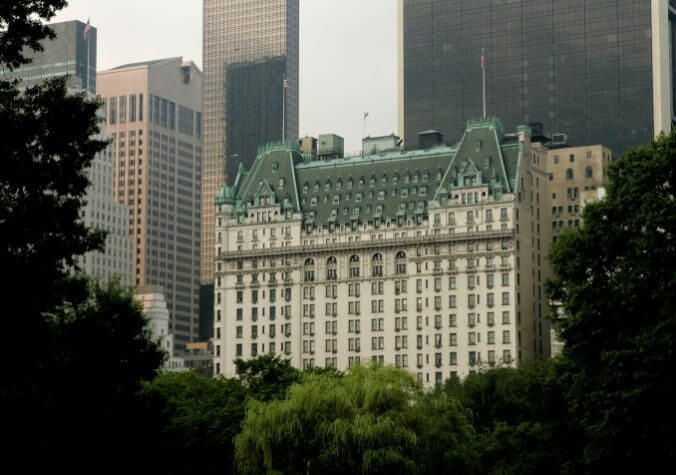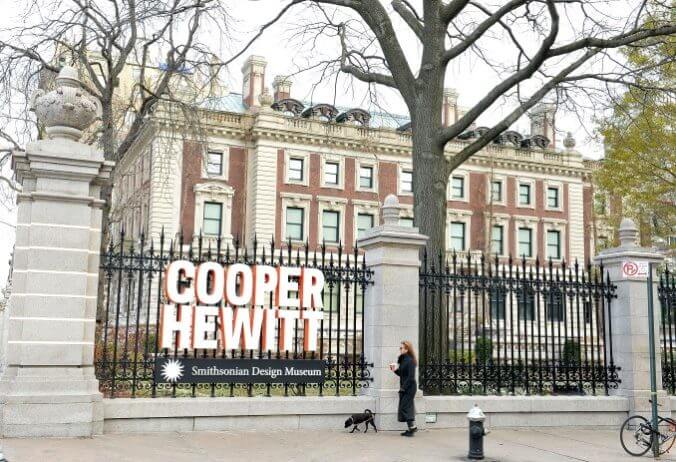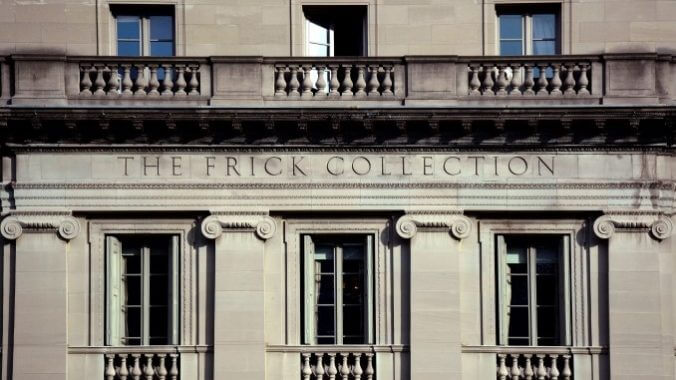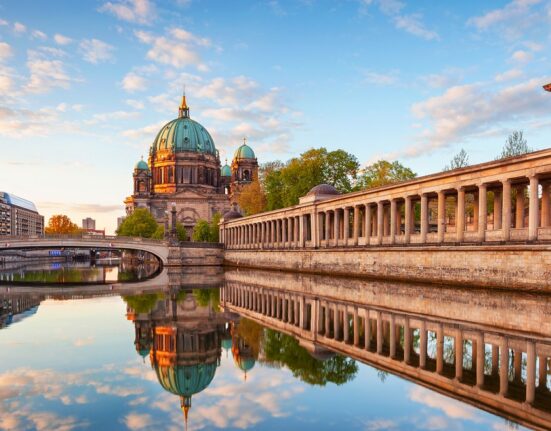The recent return of HBO series The Gilded Age takes viewers back to the 1880s New York City when robber barons named Vanderbilt, Astor, Rockefeller and Carnegie spent unchecked wealth building extravagant urban palaces on the Upper East Side. The series highlights the clash between old money and new money in a backdrop of glamorous palatial mansions, private elite social clubs and grand hotels. There’s even an opera war. Although many of the architectural masterpieces from that time period have unfortunately been demolished, a select few remain intact. Fortunately for us, some of these preserved structures even welcome visitors to explore their interior.
Where to Stay


The Plaza Hotel
The Knickerbocker Hotel in Times Square was built by none other than John Jacob Astor IV. Mr. Astor was a part of the infamous Astor family whose wealth and influence were synonymous with this era of American history. He was the son of the New York society socialite Mrs. Caroline Astor, portrayed by Donna Murphy in the HBO series. He was a particularly flamboyant character known for his investments in iconic properties like the Waldorf-Astoria. As depicted in the series, the Astors descended from original old money New York. At the time the word Knickerbocker was synonymous for upper-crust, Dutch-descending New Yorkers.
“The Knick,” as it was affectionately known, opened its doors in 1906 with room rate averaging $3.25 a day. It quickly became a haven for the city’s elite and a beacon of the luxurious lifestyle of the time, even earning the nickname “The 42nd Street Country Club.” It closed during the prohibition era and transitioned into an office building. After extensive reconstruction, The Knickerbocker Hotel re-emerged in 2015 as a luxury hotel. Today, it stands at the crossroads of 42nd Street and Broadway as one of the very few grand Beaux-Arts style hotels to survive.
When The Plaza Hotel opened on the corner of Fifth Avenue and Central Park South in 1907 it was described as the greatest hotel in the world. Henry J. Hardenbergh designed The Plaza along with other iconic Gilded Age era buildings such as the Dakota Apartments and the Waldorf Astoria Hotel. From 1,650 crystal chandeliers to the largest single order of gold-entrusted china, no expense was spared when building the French Renaissance style hotel.
Since then the hotel has become a cultural icon. A who’s who of celebrities from Marylin Monroe to the Beatles to Frank Lloyd Wright have all stayed at The Plaza. F. Scott Fitzgerald set scenes of The Great Gatsby in the hotel while it also served as a backdrop for movies such as North by Northwest, Barefoot in the Park and Home Alone 2. In 2008 the hotel went through a three-year, $400 million renovation restoring the mosaic floors, sparkling chandeliers, iconic stained glass and gold-trimmed ceilings while adding 21st century touches. Now mosaic bathroom floors and 24-karat gold-plated faucets sit beside touchscreen devices that let guests dim lights, change room temperatures or call for assistance at the touch of a button.
What To See


The Andrew Carnegie Mansion
As portrayed in the series, during the late 1880s well-to-do New Yorkers began migrating north to build mansions along Fifth Ave near the eastern border of Central Park. In the relentless pursuit to outshine one another by continuously constructing the most luxurious mansions, Fifth Avenue became home to the biggest homes in the city, eventually earning the nickname Millionaire’s Row. The Bowery Boys host a historic walking tour of the Gilded Age mansions several times a month from those who want to stroll up and down Fifth Avenue hearing the stories of the most infamous families of the time. Few of the original mansions still stand, and some of the best still extant examples of the Beaux-Arts style that the Gilded Age was known for were actually built after the era is generally acknowledged to have ended. These homes might not have been built in the 1880s, but they’re still architecturally and spiritually of that era. Some of the highlights include:
The 64-room Andrew Carnegie Mansion was built by the industrial magnate between 1899 and 1902 on the corner of Fifth Avenue and 91 St. The house was the first private residence in the United States to have a structural steel frame. With the most modern amenities of its time, including an Otis elevator and central heating, the mansion reflected the wealth of its owner. Today, this National Historic Landmark is the Smithsonian Institution’s Cooper-Hewitt Museum. The museum is dedicated to historic and contemporary design with more than 210,000 design objects covering 30 centuries. Visitors can stop by the museum from 10 a.m. to 6 p.m. daily to check out both the extensive design collection as well as one the former mansions of one of America’s richest tycoons.
The Harry F. Sinclair House is an ornate French Renaissance-style townhouse located on Fifth Avenue and 79th Street. Prominent architect C.P.H. Gilbert constructed the house in 1898 for fur magnate Isaac D. Fletcher, who aimed to rival the extravagance of William K. Vanderbilt’s 660 Fifth Avenue residence. Oil tycoon Harry F. Sinclair bought the five-story home in 1918. The former mansion with its Gothic arches, gargoyle heads, grand limestone façade and opulent interiors is now the Ukrainian Institute of America. It serves as a center dedicated to promoting the art, music and literature of Ukraine. For a suggested donation of $10, visitors can tour parts of the former Gilded Age mansion during open hours.
The James B. Duke House also stands along New York City’s Millionaire’s Row. Built in 1912 for tobacco and electric energy magnate James Buchanan Duke, the mansion is renowned for its Beaux-Arts style. The stately limestone exterior, grand entrance and ornate carvings were once the backdrop for Duke’s illustrious social gatherings. The interior wood paneling, gilded moldings and intricate plasterwork reflect the Duke family’s fascination with European aristocratic styles. Now housing the Institute of Fine Arts as part of New York University, it serves an educational purpose while continuing to reflect the grandeur of its original owner.
The Frick Collection is a premier art museum located in the former residence of industrialist Henry Clay Frick. Constructed around 1913, the neoclassical mansion is an architectural landmark with its majestic Indiana limestone facade, grand staircase, enclosed garden court and ornate ceiling. Today the mansion-turned-museum is filled with old master paintings, fine furniture, and exquisite porcelains, much of it collected by Frick himself. The Frick Collection permanent collections showcase artwork by Bellini, Fragonard, Goya, Rembrandt, Titian and Velázquez. It is important to note that the Frick Collections historic buildings are temporarily closed for renovations, so the temporary new home of The Frick Collection at 945 Madison Avenue.
Jennifer Simonson is a travel writer by trade and a lover of the world’s food, cultures, drinks and outdoor spaces by nature.







